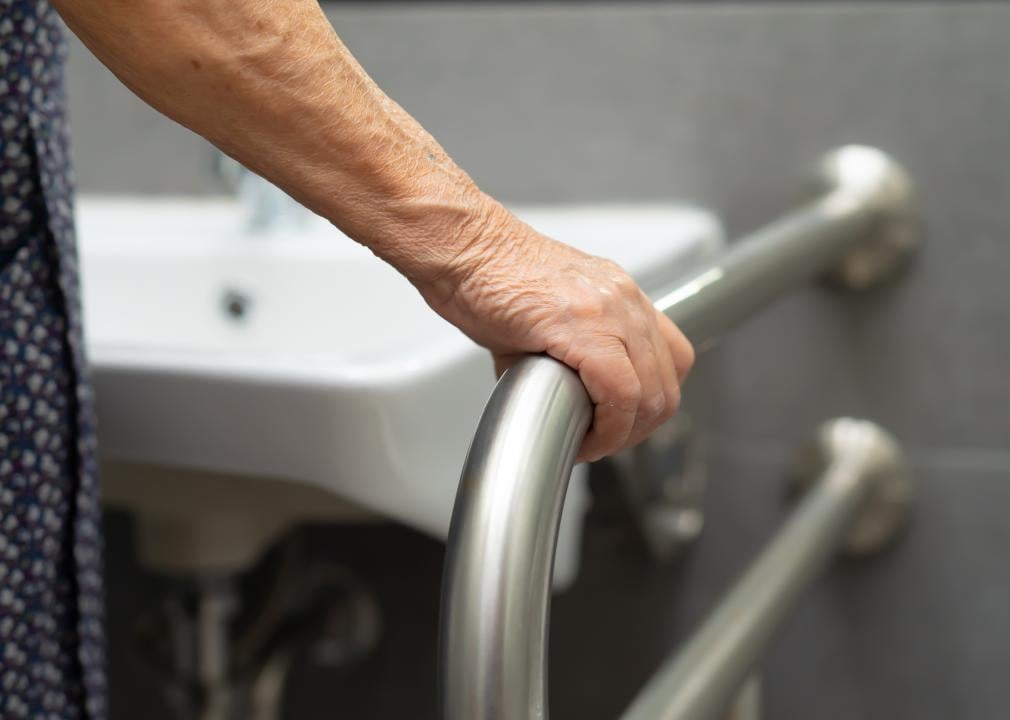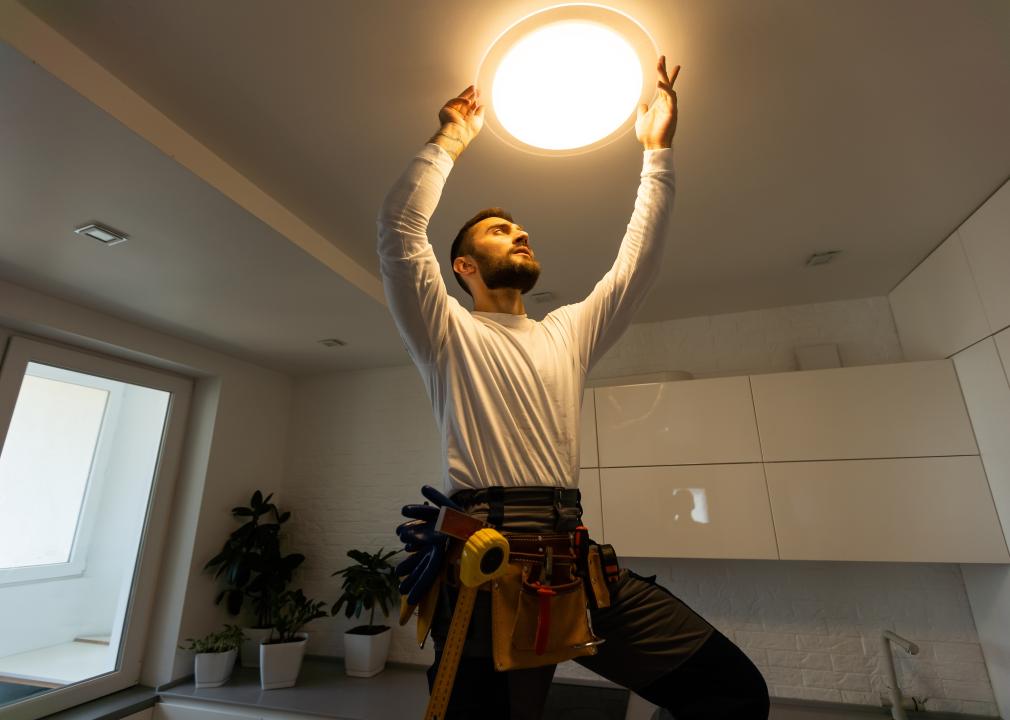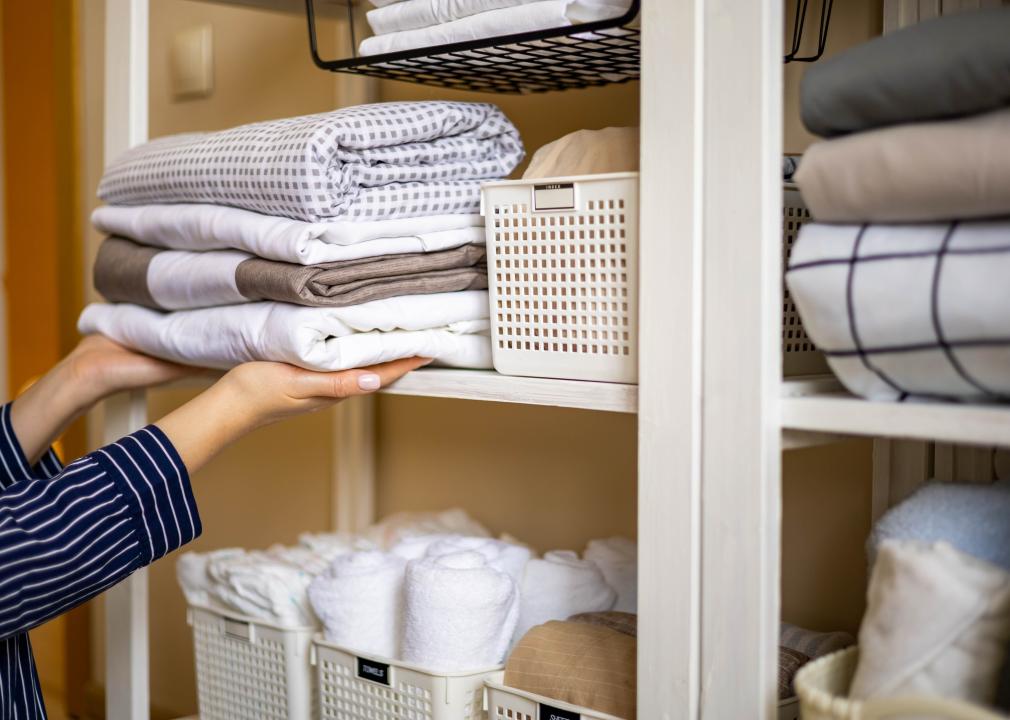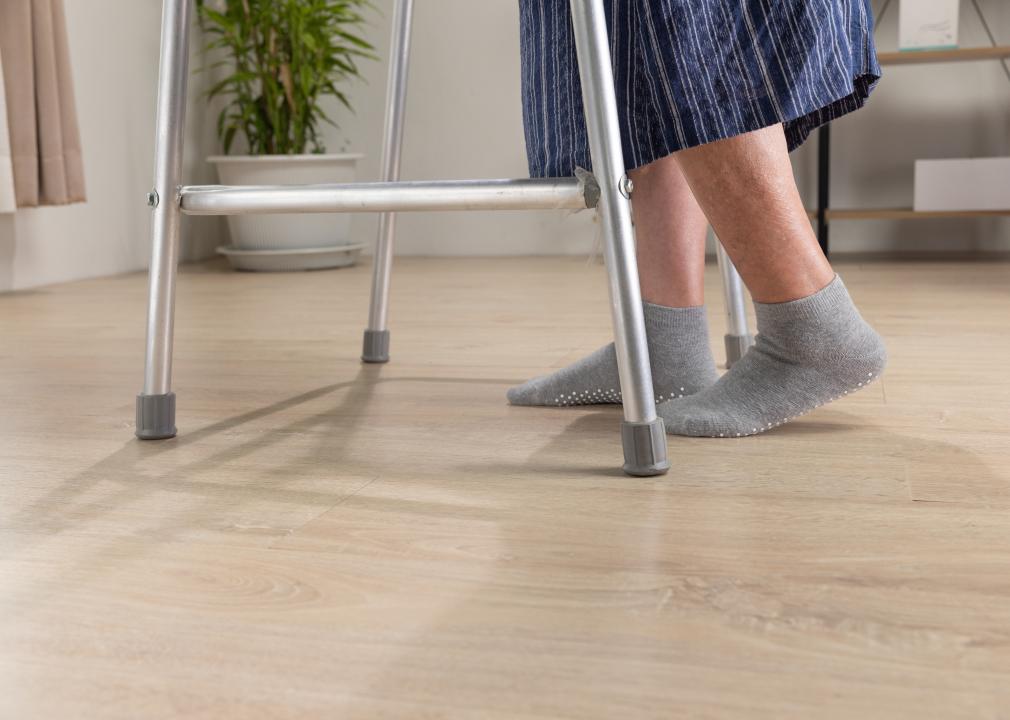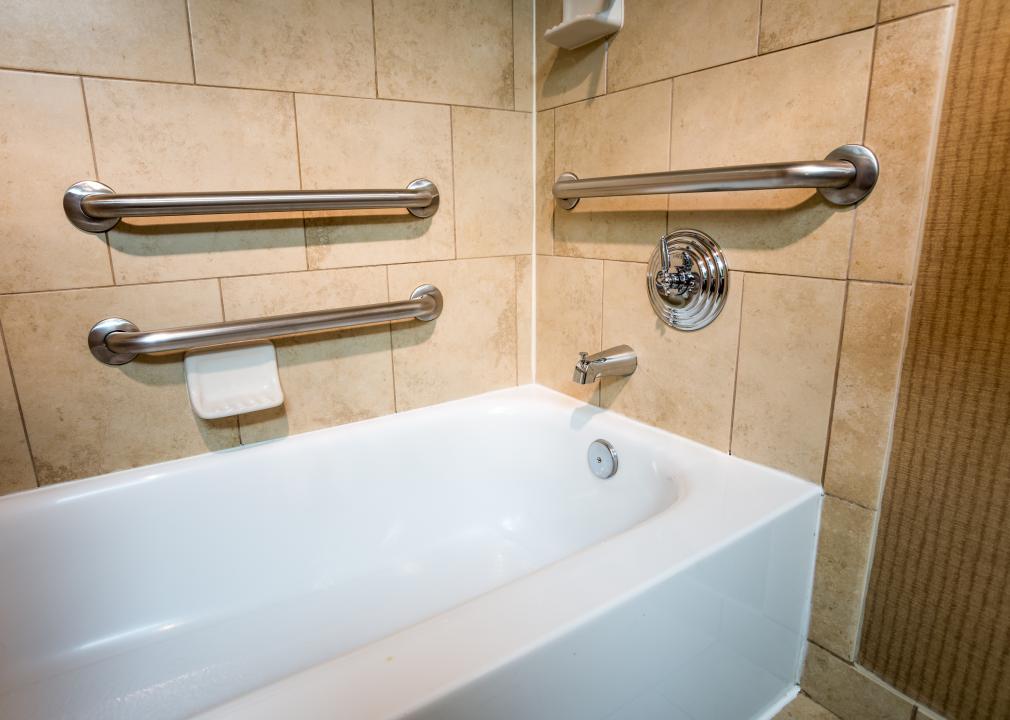5 home modifications for older adults looking to age in place
sasirin pamai // Shutterstock
5 home modifications for older adults looking to age in place
A person uses a bar in a bathroom.
As baby boomers age, the majority want to continue living independently in their homes, otherwise known as aging in place.
About 78% of homeowners over the age of 60 prefer this option over moving into a senior or assisted-living facility, according to a 2024 survey from real estate company Redfin. Many Americans want to age in place to preserve a sense of independence, remain connected to existing communities, and avoid the high cost of long-term care. The median monthly cost of an assisted-living facility ranges from $5,350 to $9,733, depending on the level of care.
QMedic compiled a list of ways those looking to age in place can modify their homes using research from the Centers for Disease Control and Prevention, the University of Southern California’s Leonard Davis School of Gerontology, and other sources.
While the majority of older adults surveyed want to age in place, only 15% have begun to consider how to modify their homes to make that possible, according to a survey from the University of Michigan Institute for Healthcare Policy and Innovation. By 2030, the entire baby boomer generation (those who were born between 1946 and 1964) will be over 65, and the sooner they begin preparing, the more equipped they will be to age independently in their homes.
Despite the high costs of senior-living facilities, long-term in-home care is also expensive, at a monthly median cost of about $6,000, according to a recent Genworth survey. However, some home modifications can allow older adults to live at home longer without the help of a health aide.
The reason why these modifications are so important is that over three-quarters of elderly injuries occur at home, according to a 2020 study by the National Center for Injury Prevention and Control. In fact, 10.9% of adults over 65 and 24% over 85 have trouble using some features in their homes, according to a report compiled by the National Institute on Aging. The most common sources of difficulty were entering the home and using the bathroom and kitchen. And while 1 in 4 people over the age of 65 falls every year, according to CDC data, strategic home modifications can help reduce the risk and consequence of such incidents.
Those interested in pursuing home modifications who are concerned about the cost may consider checking with their local eldercare organizations for resources. The Department of Agriculture also offers housing repair loans and grants for low-income adults, and the Department of Veterans Affairs offers veterans grants for housing adaptations to accommodate service-related disabilities.
![]()
Andrew Angelov // Shutterstock
Add lighting
Electrician installing electric lamps.
Falling is the most common cause of injury for people over 65, in part due to age-related loss of eyesight. Older adults with vision impairment are two times as likely to fall, according to a 2022 study by the International Institute for Population Sciences.
One way to improve visibility in your home is to install LED lights, which can be connected to smart devices and controlled remotely. Installing visual-cue lighting, such as around doorframes, may also reduce falls in the older population by as much as 30%, according to the Mount Sinai Light and Health Research Center. Replacing existing bulbs with LEDs costs about $200 while adding new fixtures will be an additional expense. However, because LED bulbs are efficient, they may lower your overall energy costs.
Kostikova Natalia // Shutterstock
Declutter and create accessible storage
Woman in pajamas putting folded linens into cupboard.
Clutter can present a number of problems for older adults, including increased fall risk, health hazards such as mold and insect infestation, and preventing care workers and first responders from entering the home. One way to address clutter is to make sure your storage is accessible. Keep belongings at a height that does not require bending down or using a step stool to reach.
For those with arthritis—which constitutes about 47% of adults over age 65, according to the CDC—replacing existing knobs and handles with wider ones that are more comfortable to grip can make daily tidying easier and less painful. Replacing cabinet doors with more accessible features can cost anywhere between $900 and $4,500.
Toa55 // Shutterstock
Remove carpets or other uneven surfaces
Elderly woman in nonslip grip socks.
Uneven surfaces—such as rugs, transition strips, ripples in old carpets, and other flooring damage—can constitute significant tripping hazards. They may also impede mobility for those who use wheelchairs, walkers, or canes. Replacing your entire floor with soft, senior-friendly flooring like slip-resistant cork or rubber is ideal, but may be cost-prohibitive.
Easier modifications include using rubber threshold ramps to cover transition strips and bridging any gaps that present a hazard. Be sure to examine the floors for any surface damage that could pose a trip hazard as well, such as chips in tile or rips in carpet. Consider replacing particularly slippery and hard flooring such as stone or tile.
Pvstockmedia // Shutterstock
Tighten or install handrails
Handicap bathtub with hand rails.
Installing handrails is another way to reduce the risk of falling at home. Higher placement, between 36 and 42 inches above the ground, is particularly helpful for balance. Consider adding handrails throughout the house, especially in areas with heightened fall risk, including bedrooms, bathrooms, and stairways. Purchasing and installing a handrail can cost between $20 and $250 per linear foot depending on the material. If you already have handrails installed at home, check to make sure that they’re tightly attached so they don’t come off the wall during a fall.
Ilia Matushkin // Shutterstock
Install bathroom supports
Bathroom adapted with supports.
Slips and falls that occur in the bathroom can be particularly dangerous, even fatal, if they occur on hard, slippery surfaces. Shower seating, whether a built-in bench or a shower chair, can help reduce the hazard. Rubber flooring or mats can provide additional stability. If you’re able to do a larger remodel, consider upgrading to a walk-in bathtub to eliminate the need to raise and lower yourself into and out of a standard tub.
A total senior-friendly bathroom remodel can be a major expense at a national average of $20 to $25,000, but more affordable additions like grab bars, anti-slip mats, and a shower bench can go a long way toward making a bathroom safer for an aging homeowner.
Additional research by Elena Cox. Story editing by Mia Nakaji Monnier. Additional editing by Kelly Glass and Alizah Salario. Copy editing by Tim Bruns. Photo selection by Clarese Moller.
This story originally appeared on QMedic and was produced and
distributed in partnership with Stacker Studio.
